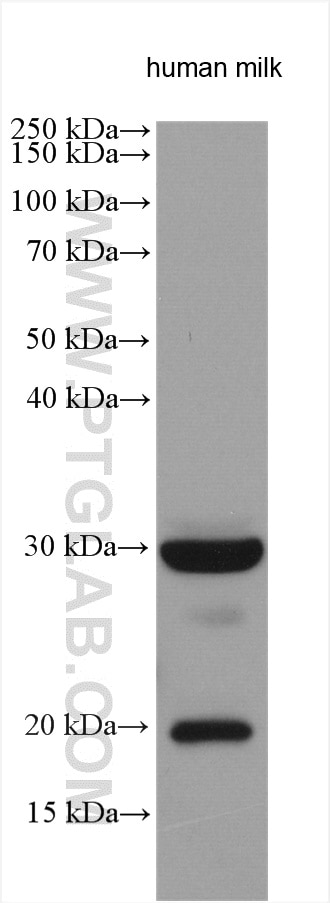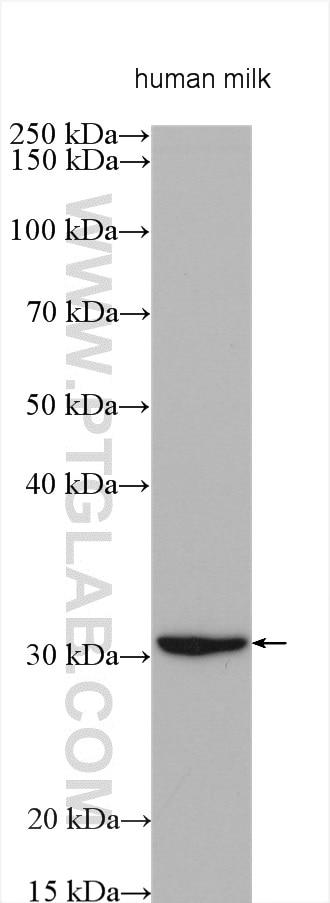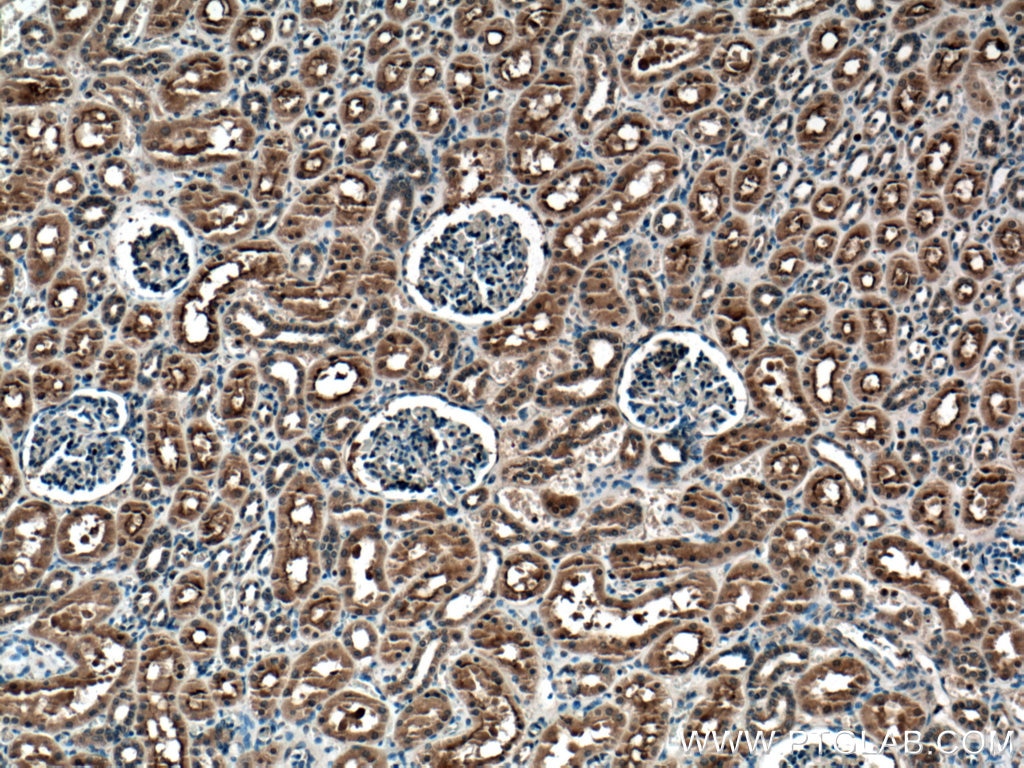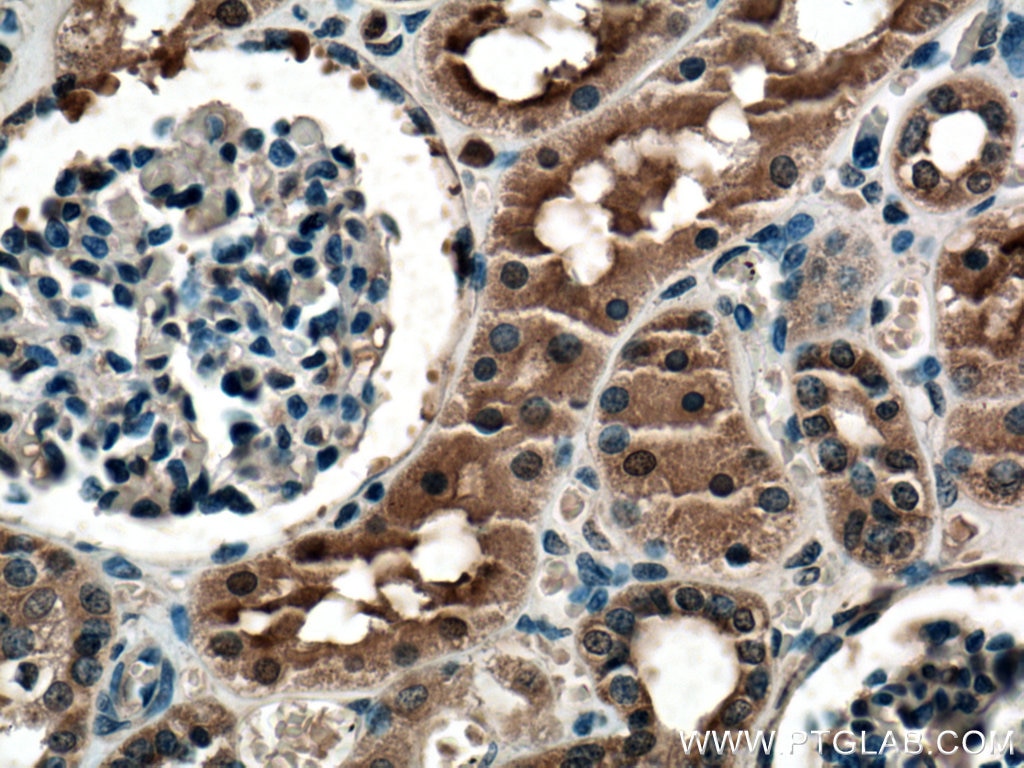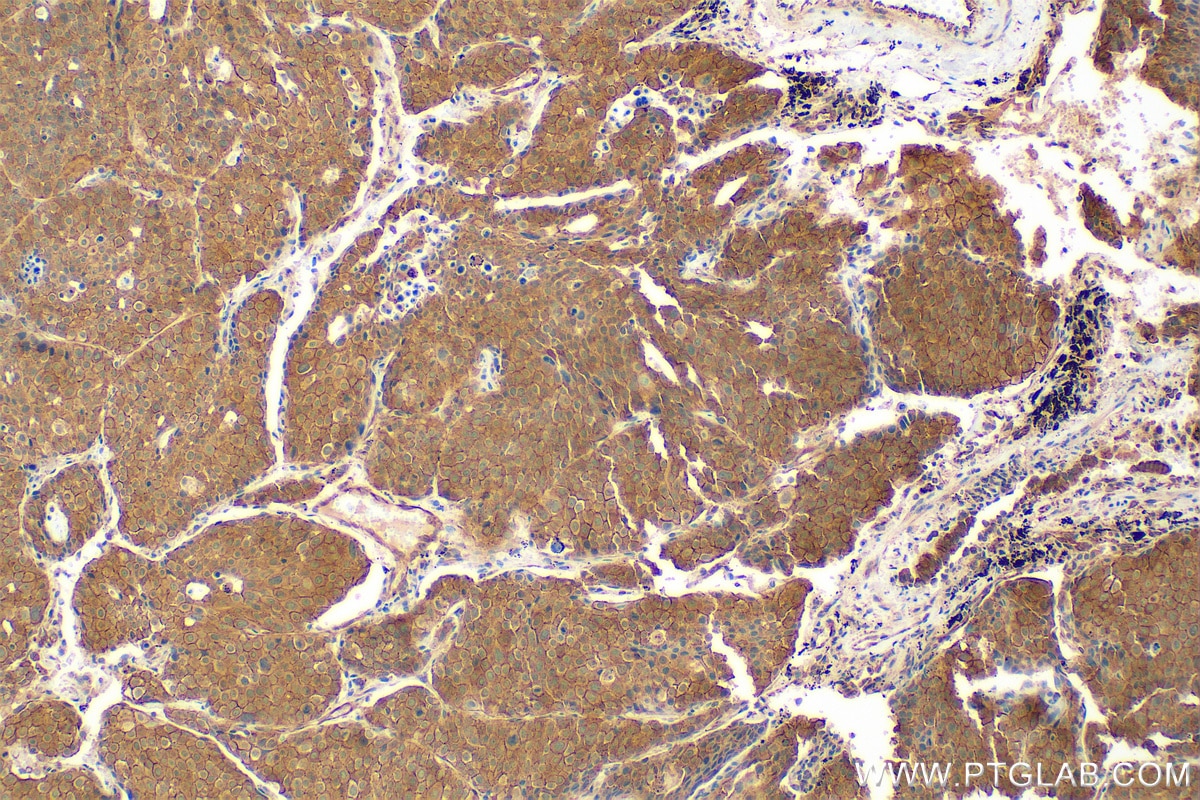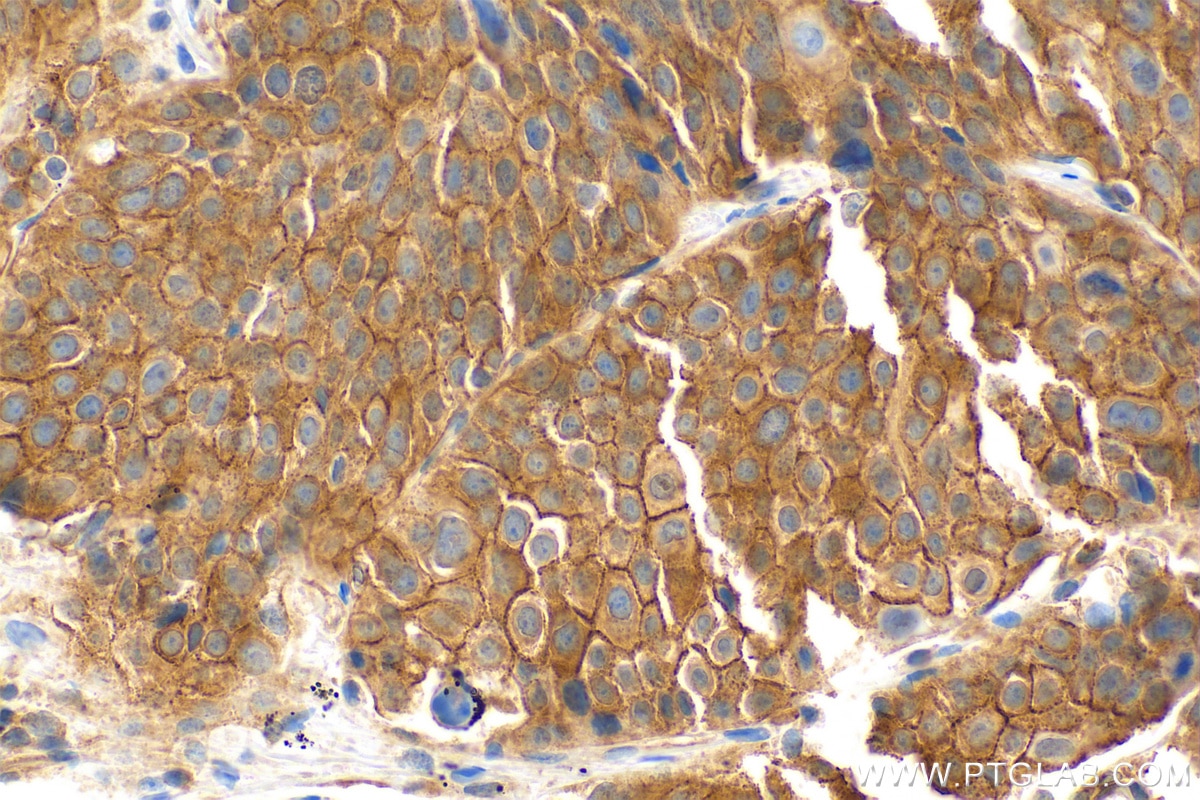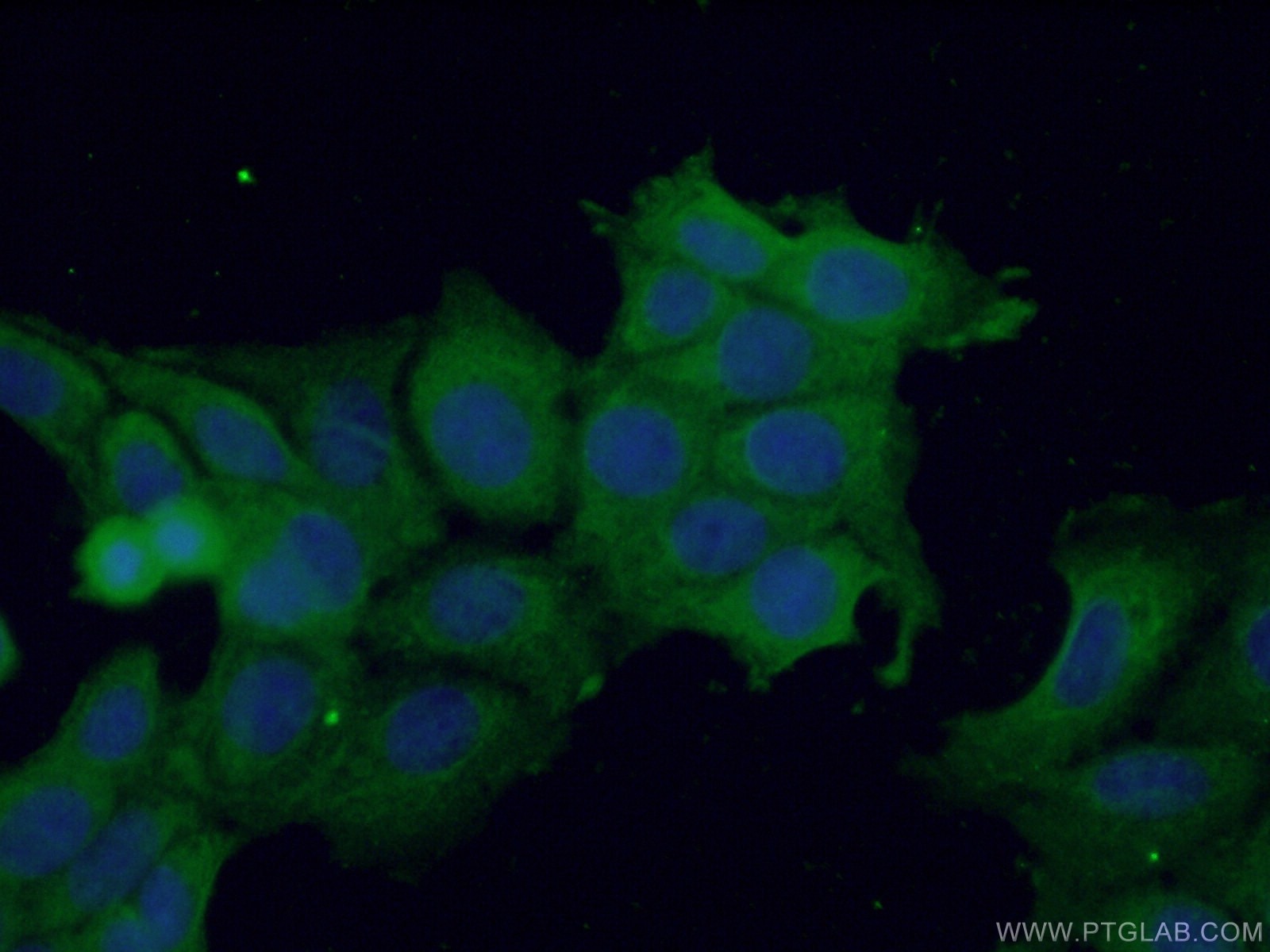- Phare
- Validé par KD/KO
Anticorps Polyclonal de lapin anti-TRAIL/CD253
TRAIL/CD253 Polyclonal Antibody for WB, IHC, IF/ICC, ELISA
Hôte / Isotype
Lapin / IgG
Réactivité testée
Humain et plus (1)
Applications
WB, IHC, IF/ICC, ELISA
Conjugaison
Non conjugué
N° de cat : 27064-1-AP
Synonymes
Galerie de données de validation
Applications testées
| Résultats positifs en WB | lait humain, |
| Résultats positifs en IHC | tissu rénal humain, tissu de cancer du poumon humain, tissu de lymphome humain il est suggéré de démasquer l'antigène avec un tampon de TE buffer pH 9.0; (*) À défaut, 'le démasquage de l'antigène peut être 'effectué avec un tampon citrate pH 6,0. |
| Résultats positifs en IF/ICC | cellules MCF-7, |
Dilution recommandée
| Application | Dilution |
|---|---|
| Western Blot (WB) | WB : 1:500-1:3000 |
| Immunohistochimie (IHC) | IHC : 1:50-1:500 |
| Immunofluorescence (IF)/ICC | IF/ICC : 1:50-1:500 |
| It is recommended that this reagent should be titrated in each testing system to obtain optimal results. | |
| Sample-dependent, check data in validation data gallery | |
Applications publiées
| KD/KO | See 1 publications below |
| WB | See 9 publications below |
| IHC | See 1 publications below |
| IF | See 1 publications below |
Informations sur le produit
27064-1-AP cible TRAIL/CD253 dans les applications de WB, IHC, IF/ICC, ELISA et montre une réactivité avec des échantillons Humain
| Réactivité | Humain |
| Réactivité citée | Humain, souris |
| Hôte / Isotype | Lapin / IgG |
| Clonalité | Polyclonal |
| Type | Anticorps |
| Immunogène | TRAIL/CD253 Protéine recombinante Ag25746 |
| Nom complet | tumor necrosis factor (ligand) superfamily, member 10 |
| Masse moléculaire calculée | 281 aa, 33 kDa |
| Poids moléculaire observé | 33 kDa, 20 kDa |
| Numéro d’acquisition GenBank | BC032722 |
| Symbole du gène | TRAIL |
| Identification du gène (NCBI) | 8743 |
| Conjugaison | Non conjugué |
| Forme | Liquide |
| Méthode de purification | Purification par affinité contre l'antigène |
| Tampon de stockage | PBS with 0.02% sodium azide and 50% glycerol |
| Conditions de stockage | Stocker à -20°C. Stable pendant un an après l'expédition. L'aliquotage n'est pas nécessaire pour le stockage à -20oC Les 20ul contiennent 0,1% de BSA. |
Informations générales
TRAIL, also known as CD253 or TNFSF10 (tumor necrosis factor superfamily member 10), is a typical death ligand expressed on natural killer cells and cytotoxic T lymphocytes. This protein preferentially induces apoptosis in transformed and tumor cells, but does not appear to kill normal cells although it is expressed at a significant level in most normal tissues. TRAIL induces apoptotic cell death in cancer by binding to its functional death receptors, death receptor (DR) 4 (TNFRSF10A/TRAIL-R1) and DR5 (TNFRSF10B/TRAIL-R2) to activate the extrinsic apoptosis pathway. TRAIL also activates c-Jun N-terminal kinase (MAPK8/JNK) and the transcription factor nuclear factor-κB (NFκB). The binding of this protein to its receptors has been shown to trigger the activation of MAPK8/JNK, caspase 8, and caspase 3.
Protocole
| Product Specific Protocols | |
|---|---|
| WB protocol for TRAIL/CD253 antibody 27064-1-AP | Download protocol |
| IHC protocol for TRAIL/CD253 antibody 27064-1-AP | Download protocol |
| IF protocol for TRAIL/CD253 antibody 27064-1-AP | Download protocol |
| Standard Protocols | |
|---|---|
| Click here to view our Standard Protocols |
Publications
| Species | Application | Title |
|---|---|---|
Stem Cells Transl Med Site-Specific Integration of TRAIL in iPSC-Derived Mesenchymal Stem Cells for Targeted Cancer Therapy. | ||
Int J Pharm Fusion of an EGFR-antagonistic affibody enhances the anti-tumor effect of TRAIL to EGFR positive tumors. | ||
Arthritis Res Ther IL13Rα1 protects against rheumatoid arthritis by combating the apoptotic resistance of fibroblast-like synoviocytes. | ||
Cell Biosci Long noncoding RNA TANCR promotes γδ T cells activation by regulating TRAIL expression in cis.
| ||
J Nat Prod Sanggenon C Suppresses Tumorigenesis of Gastric Cancer by Blocking ERK-Drp1-Mediated Mitochondrial Fission | ||
Phytomedicine Evodiamine inhibits ESCC by inducing M-phase cell-cycle arrest via CUL4A/p53/p21 axis and activating noxa-dependent intrinsic and DR4-dependent extrinsic apoptosis |
